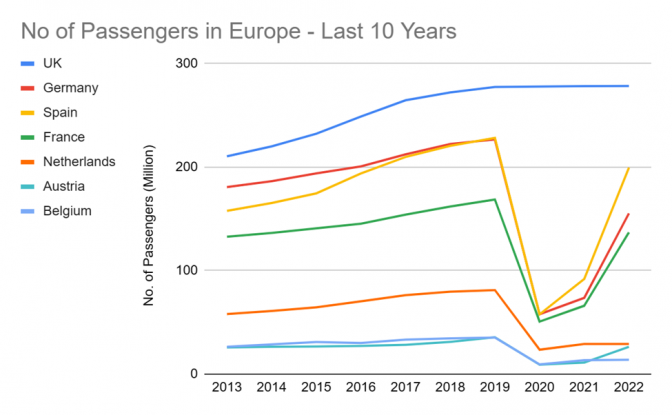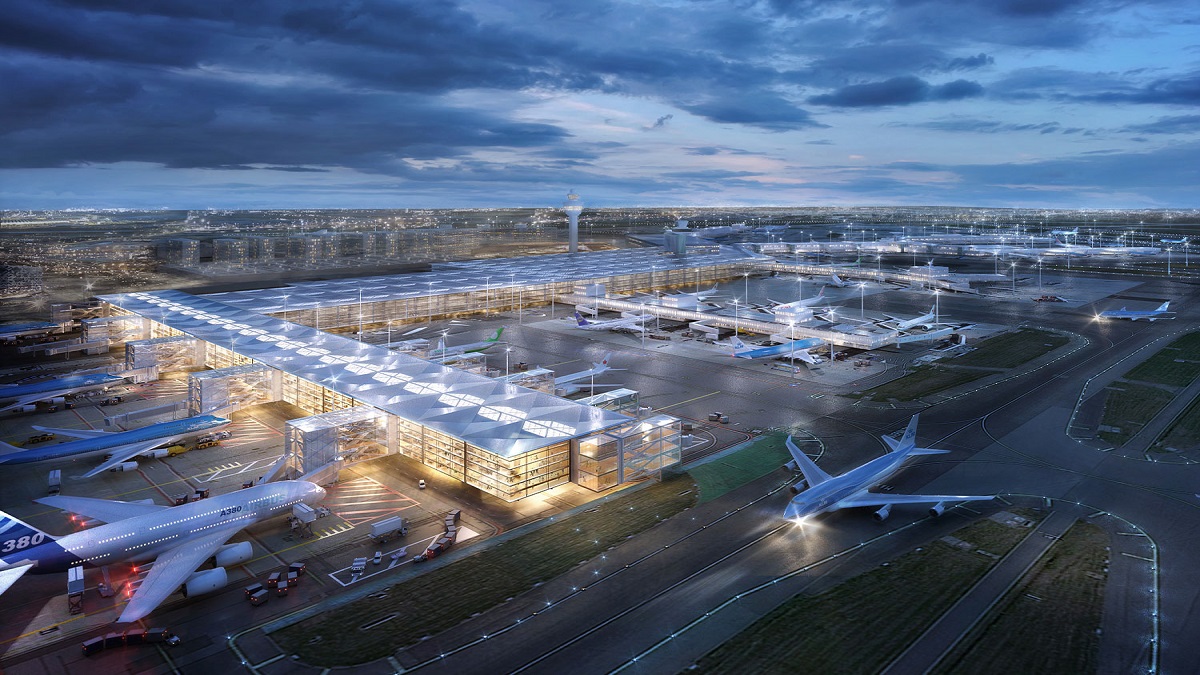Pakistan has struggled with outdated airport infrastructure and services, resulting in a poor travel experience for passengers. However, there is potential for significant economic growth through the development of the aviation industry. In this blog post, we will explore Europe’s successful approach to airport infrastructure and services, and the key lessons that Pakistan can learn from them.
Overview of Europe’s airport infrastructure and services
Europe has a long history of airport development, with significant investment in modernizing and expanding existing airports, as well as building new ones. Today, Europe’s airports are among the most advanced and well-connected in the world.
Hub airports and regional airports
Europe’s airports can be broadly categorized into two types: hub airports and regional airports. Hub airports, such as Amsterdam Schiphol and London Heathrow, serve as a major connecting points for passengers traveling between different regions of the world. Regional airports, on the other hand, cater to the needs of local communities and typically serve smaller aircraft.
Services provided
One of the key strengths of European airports is the wide range of services they provide to passengers. For example, the Frankfurt Airport in Germany offers over 300 shops, restaurants, and other services to passengers, making it one of the world’s largest airports in terms of retail space. Other European airports offer luxury lounges, spa facilities, and other services designed to enhance the passenger experience.
Sustainability
Europe’s airports also place a strong emphasis on sustainability. Many airports in Europe have implemented green initiatives, such as using renewable energy sources, reducing waste, and promoting sustainable transportation options.
Read More: Singapore: The Reason Behind Its Economic Success – About Pakistan
Case studies of successful airport development in Europe
Heathrow Airport, London, UK
Heathrow is the busiest airport in Europe and the seventh busiest in the world, handling over 80 million passengers annually. In 2019, Heathrow’s economic contribution was estimated at £16.2 billion, supporting over 180,000 jobs. Heathrow has undergone several expansion plans, with Terminal 5 being the most recent development. Since its opening in 2008, Terminal 5 has handled over 500,000 flights and 80 million passengers. The expansion of Heathrow has not only increased capacity, but also created jobs and generated revenue for the UK economy.
Amsterdam Airport Schiphol, Netherlands
Amsterdam Airport Schiphol is the third-busiest airport in Europe, with over 71 million passengers annually. The airport has undergone several expansions, with the most recent being the construction of a new terminal in 2020. Schiphol is not only a gateway to Amsterdam, but it is also a major hub for connecting flights to other European destinations. In 2019, Schiphol’s economic contribution was estimated at €9.9 billion, supporting over 114,000 jobs.
Munich Airport, Germany
Munich Airport is the second busiest airport in Germany, handling over 47 million passengers annually. The airport has undergone significant development over the years, including the construction of a new terminal in 2003 and the extension of its runways. Munich Airport has become a major hub for Lufthansa, with the airline operating over 300 flights per day from the airport. In 2019, Munich Airport’s economic contribution was estimated at €9.6 billion, supporting over 165,000 jobs.
Istanbul Airport, Turkey
Istanbul Airport is the newest airport on this list, having opened in 2018. The airport is the largest in Europe and has the capacity to handle up to 200 million passengers annually. Istanbul Airport was built to replace the older Ataturk Airport, which had become overcrowded. The new airport is located on the European side of Istanbul and has become a major hub for connecting flights between Europe and Asia. In 2019, Istanbul Airport’s economic contribution was estimated at $4.4 billion, supporting over 225,000 jobs.
Here is a comparison of passenger activity in Europe in the last ten years. The data shows a clear decline in the COVID period, the overall UK being the largest in passenger activity.

Key lessons that Pakistan can learn from Europe
Importance of investing in airport infrastructure and services
Emphasis on the importance of investing in airport infrastructure and services to drive economic growth. According to a report by Oxford Economics, the aviation sector contributes $56 billion to the European Union’s GDP and supports over 10 million jobs.
Hub-and-spoke model for airport development
Discussion of the benefits of adopting a hub-and-spoke model for airport development. This model involves creating a central hub airport that connects to smaller, regional airports. This strategy can improve connectivity, reduce congestion, and attract more airlines to the region.
Importance of providing quality services to passengers
Highlighting the importance of providing quality services to passengers, including retail, food and beverage, and lounge facilities. According to a survey by the Airports Council International, passenger satisfaction with airport services is strongly correlated with repeat visits and positive word-of-mouth recommendations.
Implementing sustainable practices
Explanation of the benefits of implementing sustainable practices in airport operations. For example, a study by the Carbon Trust found that the implementation of sustainable initiatives at airports can lead to significant cost savings over time.
Read More: Top Pakistani Fighter Jets Used By PAF – About Pakistan
Conclusion
Pakistan can learn valuable lessons from Europe’s successful airport development projects. These include engaging with stakeholders, adopting a hub-and-spoke model, and prioritizing the passenger experience. By investing in airport infrastructure and services, Pakistan can drive economic growth, create jobs, and improve the travel experience for passengers.
Improving airport infrastructure and services requires significant investment, but the long-term benefits are substantial. According to a report by the World Bank, every $1 invested in airport infrastructure generates $6 in economic benefits. Therefore, Pakistan should prioritize investment in airport infrastructure and services to capitalize on the potential benefits.

















